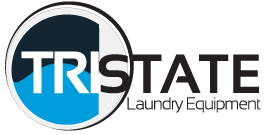When did people start cleaning their clothes? I suspect it’s when they started wearing them. Though I suppose that they didn’t clean them quite as often as they should have.
Web sources site the first form of dry cleaning being used by the ancient Romans. According to ecocleanaustin.com, they used ammonia and fuller’s earth to launder their woolen togas. Fast forward to the 19th century where Jean Baptiste Jolly, a French dye-works owner, noticed that his tablecloth became cleaner after his maid spilled lamp oil on it. He then developed a clothes cleaning service using this process which ultimately became known as dry cleaning. According to drycleancoalition.org, perc became the solvent of choice for dry cleaners in 1962. In recent years, however, the use of perc has declined as more environmentally friendly options arose.
Recently, I had the pleasure of speaking with David Knight of Kreussler, Inc. about an ever growing in popularity alternative to dry cleaning – professional wet cleaning. David explained that Kreussler, Inc. developed this process in 1985 as a healthier alternative to solvent-based cleaning processes. Professional wet cleaning is the practice of cleaning dry clean only goods in water. But please take note - professional wet cleaning is not like doing laundry. Professional wet cleaners use specialized equipment and processes to safely care for garments. It takes more than just having the special equipment to professionally wet clean a garment. It also takes considerable knowledge and skill as most items being cleaned are not durable goods but rather more fragile pieces. The specialized detergent must do the cleaning so as to eliminate the mechanical action that could lead to shrinkage and dye bleeding. In addition to the specialized detergent, a conditioner must be used so that the fabrics won’t get hard and rough to the hand. Finally, garments must be properly finished.
Why might you want to add a professional wet cleaning system to your dry cleaning plant? First, there are lots of garments that cannot be dry cleaned. For instance, items like beaded dresses, wedding gowns, and silk items are sometimes better suited for professional wet cleaning. Second, water soluble stains tend to come out easier in professional wet cleaning; it’s not that dry cleaning cannot remove them, it’s just that there will be a lot of spotting to get the same result. Third, more of the garments manufactured these days are washable as opposed to 30 years ago when everything had to be dry cleaned. Finally, professional wet cleaning doesn’t produce any hazardous waste.
There are lots of great companies out there that are heavily invested in wet cleaning soaps, conditioners, and processes. Besides Kreussler, companies such as Electrolux, Fabritec, Faultless, and UNX are leading the way in this exciting industry. If you are interested in learning more about professional wet cleaning, feel free to contact us. We are happy to answer any questions you might have.



